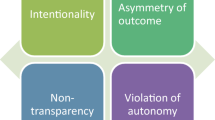Abstract
Mobile agents have emerged as a new paradigm for computing and are proving to be more flexible and dynamic than the average client in the client-server model. In the mobile agent model the program is sent to, and runs on, the remote machine, thereby operating closer to and more interactively with the remote document resource. While for the most part industry is currently cautious, research laboratories have embraced the concept and effective prototypes have emerged. AgentSys is one such mobile agent system developed by the Agent Group at the Multimedia Information Research Laboratory [26]. This prototype implements the protocols (AgenTask, AgenTransact, AgenTransfer) necessary to allow agents to autonomously roam around a network of digital resources, collect information intermittently, and return to the user with results. While both network bandwidth and user search time can be reduced using the mobile agent paradigm, such a system requires protocols at the agent language, ontology, transfer, and application levels. This paper proposes: (i) an agent-stack to enable a mobile agent system, (ii) the agent protocols necessary for agent-digital document interaction, (iii) a profound new way of thinking of documents within the mobile agent paradigm, and (iv) solutions to critical issues in mobile agent transfer and task specification as they relate to autonomous digital document collection. This includes both the transfer of multimedia mobile agent cargo and novel techniques for the specification of agent behavior within the document task. A brief quantitative analysis of the Web surfing paradigm versus the mobile agent paradigm is included to justify claims of network traffic savings using agents.
Similar content being viewed by others
References
The Agent Society, http://www.agent.org/
Aglets Workbench, IBM Japan, “Agent transfer protocol ATP/0.1,” http://www.trl.ibm.co.jp/aglets
T. Berners-Lee and D. Connolly, “Hypertext Markup Language-2.0, IETF HTML Working Group,” http://www.cs.tu-berlin.de/»jutta/ht/draft-ietf-html-spec-01.html
M. Buchanan and P. Zellweger, “Specifying temporal behavior in hypermedia documents,” in Proc. ACM Conf. Hypertext, ACM Press: New York, 1991, pp. 262–271.
A. Caglayan and C.G. Harrison, Agent SourceBook, John Wiley & Sons: New York, 1997.
F.C. Cheong, Internet Agents: Spiders, Wanderers, Brokers, and Bots, New Riders Publishing: Indianapolis, 1996.
D.N. Chorafas, Agent Technology Handbook, McGraw-Hill: New York, 1997.
B. Falchuk, N. Hirzalla, and A. Karmouch, “A temporal model for interactive multimedia scenarios,” IEEE Multimedia Magazine, Vol. 2, No. 3, pp. 24–31, 1995.
B. Falchuk and A. Karmouch, “AgentSys: A mobile agent system for digital media access and interaction on an internet,” in Proc. Globecom'97, IEEE, Phoenix, Nov. 1997.
B. Falchuk and A. Karmouch, “Agentizing the Internet—The practical design of a networked mobile agent system,” in Proc. WebNet'97—World Conf. of the Web, Internet, and Intranet, AACE, Toronto, Oct. 1997.
Federation for Intelligent Physical Agents, http://www.cselt.stet.it/ufv/leonardo/fipa.htm
T. Finin, D. McKay, and R. McEntire, “KQML as an agent communication language,” in Proc. Third Int. Conf. on Information and Knowledge Management, ACM Press, Nov. 1994.
B. Ford and A. Karmouch, “An architectural model for mobile agent-based multimedia applications,” in Proc. of CCBR'97, Ottawa, April 1997.
S. Franklin and A. Graesser, “Is it an agent, or just a program?: A taxonomy for autonomous agents,” in Proc. Third Int. Workshop on Agent Theories, Architectures, and Languages, Springer-Verlag, 1996.
R. Gray, “Agent Tcl: A transportable agent system,” in Proc. 4th Int. TCL/Tk Workshop, Monterey, 1996.
T. Gruber, “A translation approach to portable ontology specifications,” Knowledge Systems Lab, Stanford University, Computer Science Department, Technical Report KSL92-71, 1993.
C. Huang and C. Yao-Fang, “An ODA-like multimedia document system,” Software-Practice and Experience, Vol. 26, No. 10, Oct. 1996.
M. Huhns and M. Singh, “Conversational agents,” IEEE Internet Computing, March-April, pp. 73–75, 1997.
D. Johansen, R. van Renesse, and F. Schneider, “An introduction to the TACOMA distributed system version 1.0,” http://dslab3.cs.uit.no:1080/Tacoma/index.html, 1995.
M. Knapik and J. Johnson, Developing Intelligent Agents for Distributed Systems, McGraw-Hill: New York, 1997.
B. Kwan and A. Karmouch, “A multimedia agent in a distributed broadband environment,” in Proceedings of ICC'96, Dallas, June 1996.
S. Luke, L. Spector, D. Rager, and J. Hendler, “Ontology-based web agents,” in Proc. Autonomous Agents'97, Marina Del Rey, Feb. 1997.
Lycos, http://www.lycos.com
P. Maes, “Agents that reduce work and information overload,” Communications of the ACM, Vol. 37, No. 7, pp. 30–40, 1994.
Mitsubishi Electric ITA, “Concordia: An infrastructure for collaborating mobile agents,” http://www. meitca.com/ HSL/Projects/Concordia
Multimedia Information and Agent Research Laboratory, http://deneb.genie.uottawa.ca
Odyssey API, General Magic, http://www.genmagic.com/agents
J.K. Ousterhout (Ed.), Tcl and the Tk Toolkit, Addison-Wesley Publishing Company, 1994.
C. Petrie, “Agent-based engineering, the web, and intelligence,” IEEE Expert, Vol. 11, No. 6, pp. 24–29, 1996.
R. Ronnquist and C.K. Low, “Analyzing expert assistants through interaction diagrams,” in Proc. Autonomous Agents '97, Marina Del Rey, Feb. 1997.
G. Schloss and M. Wynblatt, “Providing definition and temporal structure for multimedia data,” Multimedia Systems, Springer-Verlag, No. 3, 1995.
Sun Microsystems, “The Java language: A white paper,” White Paper, Sun Microsystems, 1994.
K. Takeda, M. Inaba, and K. Sugihara, “User interface and agent prototyping for flexible working,” IEEE Multimedia, pp. 40–50, Summer 1996.
University of Michigan Digital Library Project, AI Lab, http://www.si.umich.edu/UMDL
Voyager Core Package Technical Overview, Object Space, http://www.objectspace.com/voyager
Webcrawler Search Engine, http://www.webcrawler.com
L. Weitzman and K. Wittenburg, “Grammar-based articulation for multimedia document design,” Multimedia Systems, Vol. 4, pp. 99–111, 1996.
J. White, “Telescript technology: The foundation for the electronic marketplace,” General Magic White Paper, General Magic, 1994.
Author information
Authors and Affiliations
Rights and permissions
About this article
Cite this article
Falchuk, B., Karmouch, A. The Mobile Agent Paradigm Meets Digital Document Technology: Designing for Autonomous Media Collection. Multimedia Tools and Applications 8, 137–166 (1999). https://doi.org/10.1023/A:1009655532580
Issue Date:
DOI: https://doi.org/10.1023/A:1009655532580




